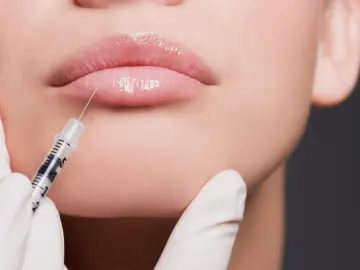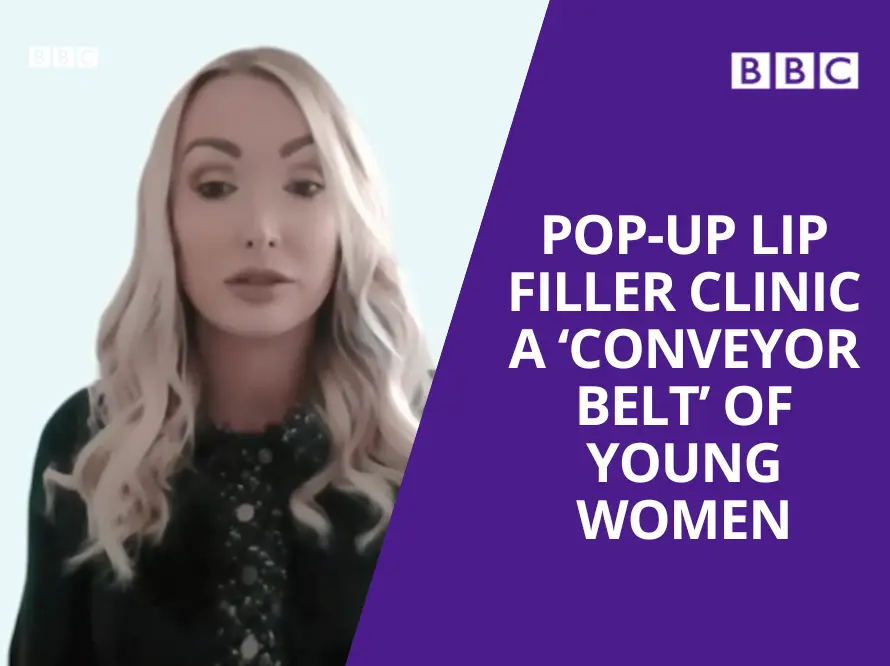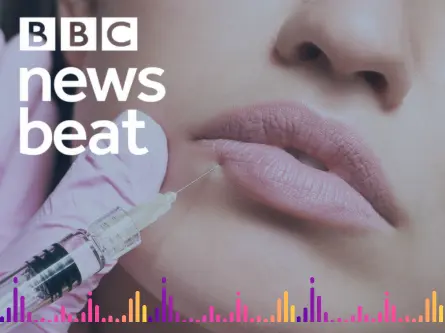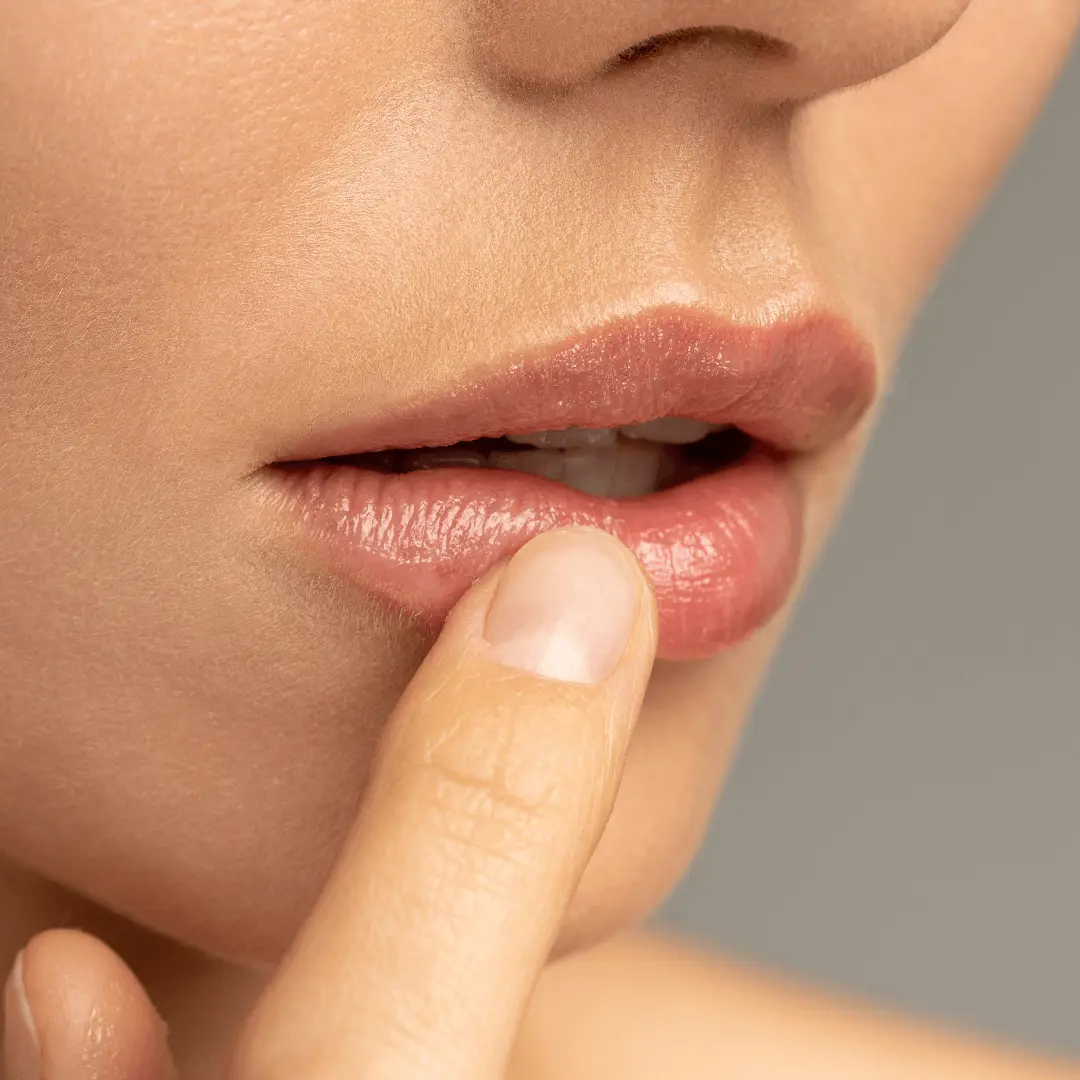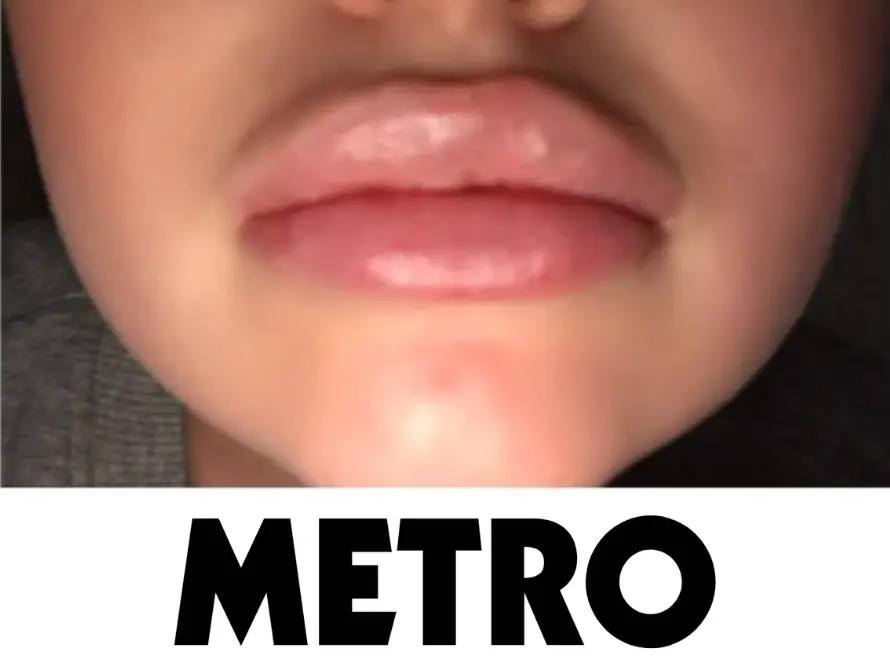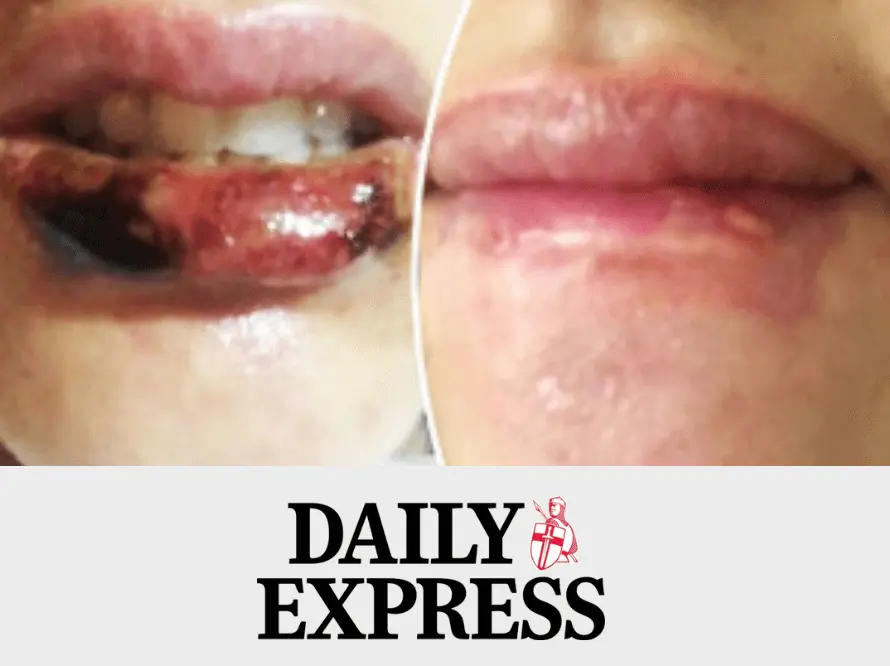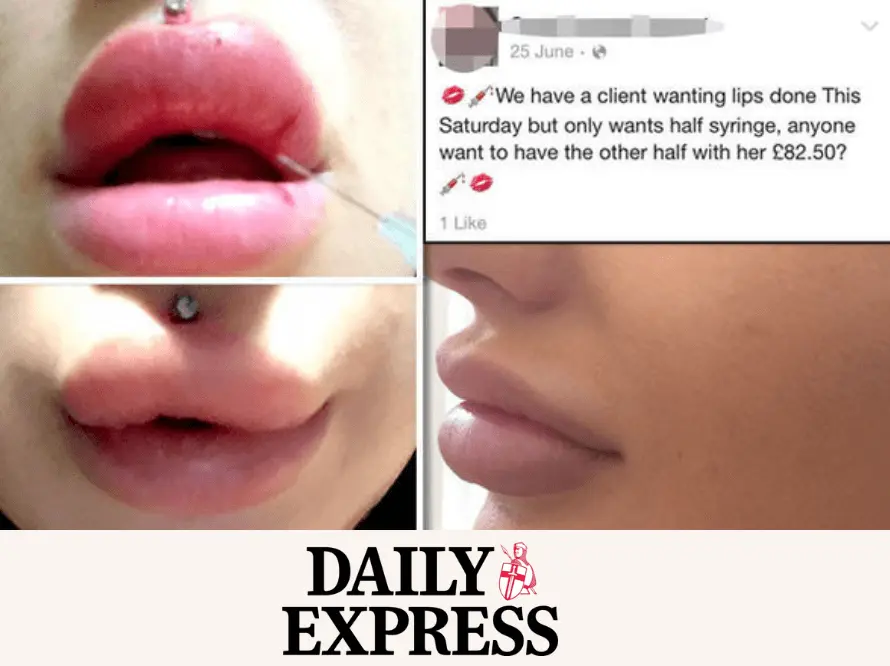Here at Save Face, we have noticed a rise in members of the public seeking out services for elective dermal filler dissolving, in particular lip fillers, usually when someone is dissatisfied with their look and they want it erased so they can ‘start again’. Here’s everything you need to know about dissolving lip fillers…
The cosmetic use of dermal fillers has been around for a couple of decades, but more recently there has been an explosion in their use and popularity, much of which can be attributed to the development and innovation surrounding filler products that are based on hyaluronic acid gels, and the rise of celebrity and social media influencers.
Hyaluronic acid (HA) is a sugar-based molecule found in our bodies that attracts water, acting as both a natural moisturiser within the skin and a lubricant and cushion for other tissues.
Unlike collagen fillers of old – favoured by the Hollywood elite in the 80s and 90s – or the more permanent implantable products that came to market in the early noughties, hyaluronic acid-based filler products have one major advantage…they can be reversed or dissolved using a product called hyaluronidase.
This is a critical in an emergency, if, for example, the needle accidentally enters a vein during the treatment, any filler injected can be dissolved to avoid a vascular occlusion or compromise to the blood flow in an area of the face. However, a newer trend has emerged more recently, with the use of hyaluronidase as a requested ‘eraser’ for undesirable lip filler.
Why do people get their lip filler dissolved?
A person may choose to electively dissolve their lip filler for many reasons, but common ones include long-term use or over-use of HA-based fillers, even multiple brands, and thicknesses, that can lead to congestion, build-up, or even isolated lumps within the lips if the products have not naturally dissolved over time or have hardened in places due to over filling.
Other reasons include, not liking their new look after a treatment, a poorly performed treatment that has created an unnatural appearance either by overfilling, asymmetry, or incorrect placement that leaves product in the wrong area of the lip, commonly seen with filler appearing beyond and above the vermillion border. This is often mentioned as migration or filler spreading but is in fact usually down to inexperienced placement as the gels in modern products are less likely to spread if used correctly by properly trained practitioners. Search for a Save Face accredited dermal filler provider.
How long after getting lip filler can I get it dissolved?
There is a temptation to walk out of a clinic after having dermal filler, go home, wake up the next morning, look in the mirror and declare that you hate them, and you want the procedure reversed.
In the hours and days after dermal filler treatment, especially in the lips, there will be considerable swelling, and even bruising; this will affect the overall result of the aesthetic enhancement, making lips appear uneven, bumpy, fake, or bright red. It can take 2-3 weeks for the product to settle within the tissue and for the swelling to subside, at which point, you will probably look in the mirror and declare that you love them! The key is patience, don’t be in a rush to demand that you want your lips dissolved.
Most cosmetic clinics will arrange a review appointment with you after a fortnight to determine if treatment has gone well, so you will not be able to get a prescription for hyaluronidase filler reversal until at least 2 weeks post treatment, unless there is an emergency that is causing a compromise to the blood supply in the lip(s) or the rest of the face, which will be obvious within hours of treatment due to extended pain, discomfort, and lip/facial discolouration.
How do you dissolve lip fillers?
Like hyaluronic acid itself, hyaluronidase exists naturally in our bodies and is an enzyme used to break down natural hyaluronic acid when it is no longer required.
Synthetic versions of hyaluronidase are manufactured as medicines – you may hear Hyalase mentioned in relation to filler dissolving. Hyalase® is a brand name for a prescription only product used in various medical applications. It is not directly licensed for use in the dissolution of dermal fillers, but the law permits off-label or off-licence use with informed consent if it is in the best interest of the patient.
Medical hyaluronidase comes in an ampoule or vial as a white powder that your practitioner will mix with the correct amount of saline before injecting it into the area where dissolving of hyaluronic acid is required. This will usually take multiple injections. Although it will get to work immediately and start to dissolve the weakest of the HA molecules; it can take up to a fortnight for the enzyme to achieve the full effect. Due to the action of the hyaluronidase, it is very difficult to just dissolve one small lump or area as the product spreads upon injection, so it’s likely that your whole lip enhancement will be reversed.
Does massaging lip filler break it down?
Hyaluronic acid-based gel fillers will eventually dissolve naturally within the skin, due to the presence of human or natural hyaluronidase. The science behind the manufacture of the products as a gel means that they are created to be more stable than natural HA and thus will not breakdown as rapidly. Depending on the product, the amount of HA it contains, and how it is made, it could be anywhere from 6-18 months before the body has completely dissolved the molecules.
Although massaging can help to encourage the body, and its natural hyaluronidase to break down the dermal filler more quickly than if you left it alone, it would still take your body a long time to break down the product and you would need to engage in daily, vigorous massaging of the area for several weeks to see any real speed up in the natural metabolism and breakdown on the HA.
If you find that you have a small lump or bump of filler product within the lips, then let your practitioner know as this can often be resolved with simple massage, but it’s important to let them have a look for you.
Is hyaluronidase or Hyalase dangerous?
Lip filler dissolving using hyaluronidase is widely available to patients and is regarded as a safe way to break down hyaluronic acid-based dermal fillers. Having said that, it is not without risks.
If you are already allergic to bee stings, for example, to the point of an anaphylactic reaction, then you will not be suitable for hyaluronidase treatment. Similarly, mild allergic reactions can occur, and there is a likelihood that the product will dissolve some of the natural or human hyaluronic acid within the area treated, although that should replenish quickly over a few days. It also cannot be used during pregnancy or if you are breast feeding.
If you have chosen to dissolve your dermal filler, and it is not an emergency, you will usually be given a patch test to rule out significant allergic reaction before you are treated with a larger dose.
Is dissolving lip filler painful?
The short answer is probably yes. The lips are one of the most sensitive areas of the face with multiple nerve endings.
Often, when you have dermal filler placed in the lips, you are given both a numbing cream beforehand, and the practitioner will use a product that contains 3% lidocaine, a local anaesthetic that is included in the syringe with the dermal filler, all of which reduces any discomfort during injection. With hyaluronidase, your practitioner can only offer you the numbing cream, so it is likely that you will notice a stinging sensation as the product goes into your lip. Often multiple injections are required, alongside massaging the lip to help the product flow through the tissue.
Everyone’s pain threshold is different, but it is certainly not something to undertake on a whim, especially if you could easily wait for the filler to naturally dissolve. You will also have swollen and tender lips for a little while afterwards.
Do your lips go back to normal after dissolving fillers?
After the hyaluronidase enzyme has broken down the HA in the filler and your body has naturally excreted the debris through your lymphatic system, your lips should return to normal. This usually takes a couple of weeks, and during that time your body will also replenish some natural hyaluronic acid to the area.
If you have had too frequent or excessive dermal filler treatments that have resulted in large quantities of product stretching the proportions of your lips into an oversized pout, there is a chance that the skin will appear a little deflated to begin with after dissolving, and the lips will need time to heal.
Can I have my lips refilled after lip filler dissolving?
Yes, although you will be asked to wait a minimum of two weeks to allow the hyaluronidase to finish dissolving the previously injected filler product completely, and to ensure any swelling or trauma to your lips from the injections has subsided and healed.
There is no quick fix or instant result with this so you should be mindful of anyone who does not suggest a decent delay between dissolving your lip filler and refilling your lips, for one the hyaluronidase will just eat up any new product added in if it is still present and active in your skin.


